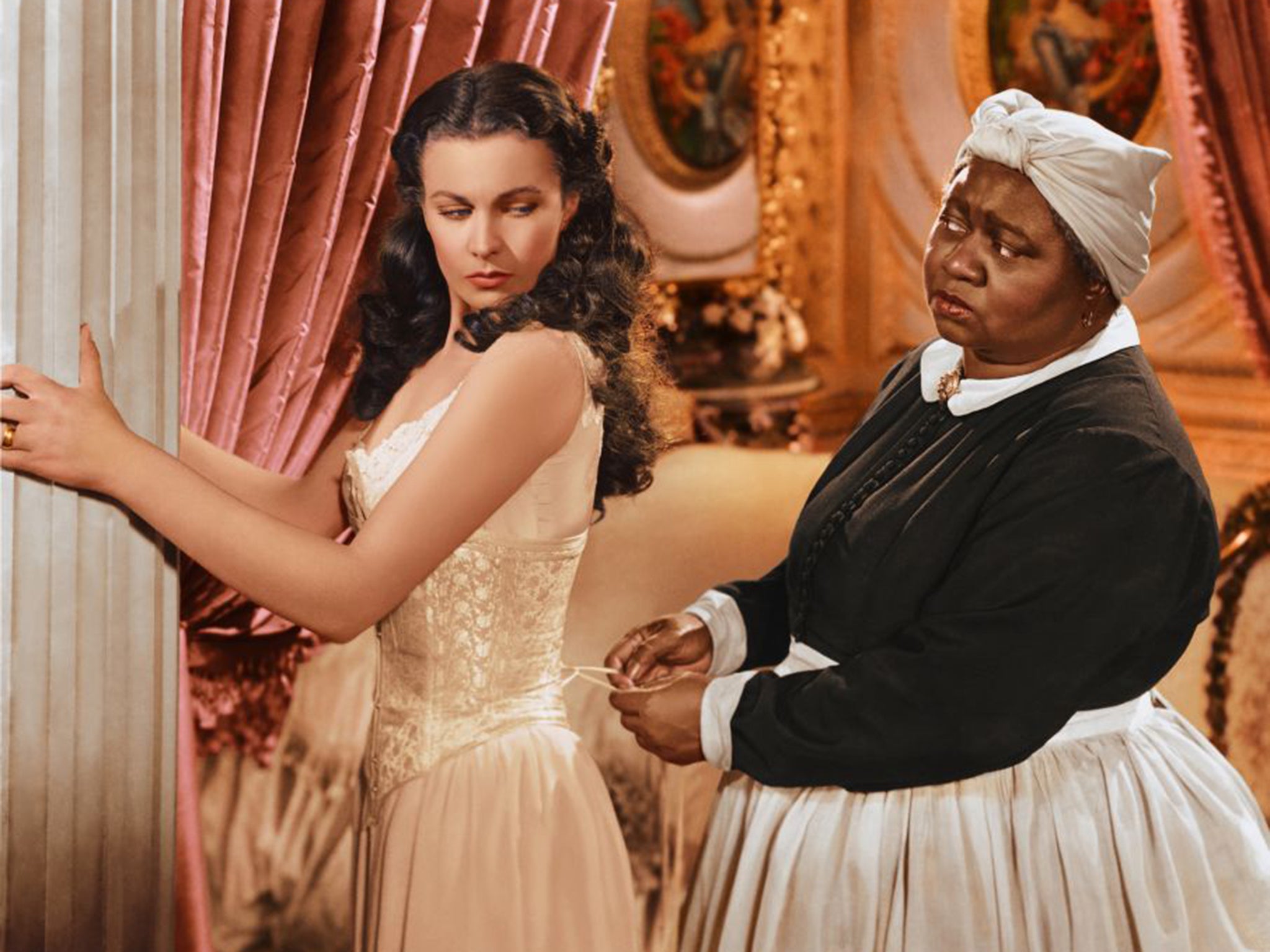Gone with the Wind is an 'undeniably racist artefact', says prominent critic
Lou Lumenick, a writer for the New York Post, labelled the film 'insidiously' racist for its portrayal of African-Americans

Your support helps us to tell the story
From reproductive rights to climate change to Big Tech, The Independent is on the ground when the story is developing. Whether it's investigating the financials of Elon Musk's pro-Trump PAC or producing our latest documentary, 'The A Word', which shines a light on the American women fighting for reproductive rights, we know how important it is to parse out the facts from the messaging.
At such a critical moment in US history, we need reporters on the ground. Your donation allows us to keep sending journalists to speak to both sides of the story.
The Independent is trusted by Americans across the entire political spectrum. And unlike many other quality news outlets, we choose not to lock Americans out of our reporting and analysis with paywalls. We believe quality journalism should be available to everyone, paid for by those who can afford it.
Your support makes all the difference.Admired by generations of film lovers for its sweeping epic of a story set in the American South during the Civil War, Gone with the Wind frequently features on lists of greatest movies and remains cinema’s biggest box office success, once inflation is taken into account.
Yet one prominent critic has called for the movie to be consigned to history, condemning it as an “undeniably racist artefact” that should only be on display in a museum.
Lou Lumenick, a writer for the New York Post, labelled the 1939 film “insidiously” racist for its portrayal of African-Americans, arguing that it “unabashedly romanticises” slavery. His column follows the nationwide debate in the US over the Confederate flag, which still flies prominently in some parts of the country but is increasingly viewed as an unacceptable symbol of slavery and racism.
Calls for the flag to be hauled down for ever have gained momentum in the wake of the racially motivated killing of nine African-Americans in a South Carolina church, after photographs emerged of the gunman posing with the flag.

“If the Confederate flag is finally going to be consigned to museums as an ugly symbol of racism, what about the beloved film offering the most iconic glimpse of that flag in American culture?” Mr Lumenick wrote of Gone with the Wind. He asked what it said about the US if the country continued to embrace a movie that “stands for many of the same things as the Confederate flag that flutters so dramatically over the dead and wounded soldiers at the Atlanta train station” in one scene in the film.
The Museum of Modern Art is to screen the film next month as part of its 100th anniversary of Technicolor, the colour film process widely used in Hollywood until the 1950s. Referring to the museum, the critic wrote: “Maybe that’s where this much-loved but undeniably racist artefact really belongs.”
His column prompted a furious response from readers critical of its “liberal” sentiments; many said that committing the film to a museum was like the Nazis burning books. One, James Davidson, wrote: “We are moving towards censorship and all because of the actions of one crazy kid.”
It emerged this month that Warner Bros, which holds the rights to Gone with the Wind, had discontinued sales of models of “the General Lee”, the orange Dodge Charger with a Confederate flag on the roof that features in the television show The Dukes of Hazzard.
Gone With the Wind, which was adapted from the Southern writer Margaret Mitchell’s 1936 Pulitzer Prize-winning novel, won 10 Academy Awards in 1940. Yet even then it proved controversial for portraying black stereotypes, sustaining civil war myths and glorifying slavery. When it opened in cinemas, it faced demonstrations and criticism from black audiences.
It was the first colour film to win the best picture Oscar, however; and the best supporting actress, Hattie McDaniel, became the first African-American to win an Academy Award. It is still the biggest-grossing film, selling $1.6bn of tickets when adjusted for inflation.
The American Film Institute polls in 1998 and 2007 put it in the top 10 best US movies, and it was selected for preservation in the US National Film Registry in 1989. A poll by Harris Interactive last year named it the most popular film of all time.
Join our commenting forum
Join thought-provoking conversations, follow other Independent readers and see their replies
Comments